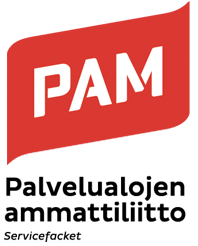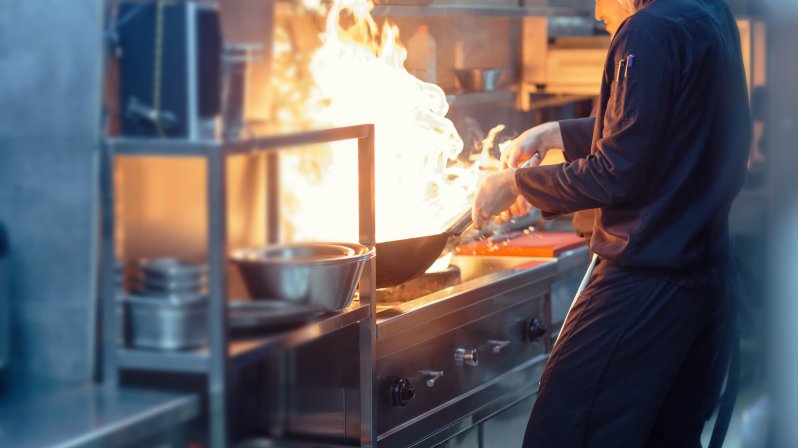Working temperatures at the workplace – what summer workers should bear in mind
Employers’ responsibility for workers’ health also covers the temperature at the workplace. There is no doubt that temperature affects wellbeing and morbidity and thus labour productivity. Therefore providing training on working temperatures and preventing possible hazards is also an element in orientation for new employees.
“When we talk about working temperatures, we’re also talking about occupational safety. If a supervisor doesn’t take the initiative when it comes to guidance on temperatures, then be active yourself and first ask your supervisor and also your coworkers. If you feel the guidance is insufficient, you can turn to the occupational safety representative at your workplace”, says PAM’s working environment specialist Merja Vihersalo.
Employers are responsible for keeping inside temperatures below +28 °C if the outside temperature is above +25 °C. According to Vihersalo, occupational healthcare assesses workplace temperatures and their effect on health.
“If there are persistent temperature-related risks at the workplace, this will have been factored into the workplace hazard and risk assessment, and can be found in the occupational health workplace evaluation. These should also be part of job orientation”, Vihersalo says.
In addition, employers must compile an annual occupational safety action plan containing measures to improve temperatures at the workplace.
There is no legislation on working in hot or cold temperatures, only recommendations. For example, there are guideline temperature levels depending on the workload. In its thermal comfort recommendations, the Finnish Institute of Occupational Health considers the temperature range 21–25 °C amenable. It is suitable for light-duty sedentary work like checkout work. For shelving and picking goods, the recommendation is 19–23 °C, and 12–17 °C is suitable for heavy work, for example lifting heavy loads by hand.
The limit for work in hot and sweltering conditions is 28 ° C
This summer, many service sector workers may suffer from hot conditions. In small shops, offices and warehouses, the air conditioning is often non-existent or ineffective. In restaurant and canteen kitchens, heat is a problem all year round, with temperatures rising above 40 °C. Property service workers are also severely affected in hot outside weather.
“If temperatures rise, it’s important to remember to take breaks, have regular hydration and clothing that is suitable for the weather conditions”, is Vihersalo’s general tip.
If, despite technical measures, the temperature at the workplace goes above +28 °C in the summer heat, working should be reduced by shortening workers’ exposure time to the heat.
“The limit is 28 °C, after which the number of breaks must be increased. Depending on the temperature, the length of breaks is either 10 (under 33 degrees) or 15 minutes (over 33 degrees) per hour. If the temperature goes higher still, and the work is physically demanding, special protection measures are required, such as using protective equipment. The recommendations on breaks are the same for all sectors”, Merja Vihersalo says.
She also points out that the use of face masks also increases the stress on the body.
“This needs to be taken into account in assessing the need for breaks. In hot weather, with physical stress and a face mask, the load is higher than without a mask. So the need for breaks increases. The breaks needed should to be assessed based on the external working conditions and the individual attributes of the mask-wearer. Therefore I strongly recommend supervisors to discuss the situation at the workplace with the occupational safety representative. Employers should also use the expertise of occupational healthcare in assessing the conditions at the workplace and ask them to update their workplace evaluations”, Vihersalo stresses.
Heat-related breaks designated by the employer are occupational safety breaks, and are paid time.
Working in high temperatures is physical stress. If the work is very physical, that is an additional stress factor.
“Heat, moisture and heavy physical work are a combination requiring special attention”, she adds.
If it is too hot where you work, the most common symptoms include fatigue, headache and nausea. Heat also reduces mental performance and makes you more prone to accidents. Ways to prevent hot work hazards include cooling working premises or workstations or using protective equipment.
Working in cold conditions can mean extra pay
Tyypillisiä kylmiä työympäristöjä palvelualoilla ovat kylmävarastot ja pakkaamot. Kiinteistöhuollossa ja hiihtokeskuksissa tehdään myös ulkotöitä. Elimistön lämpötila alkaa laskea kylmätyössä, kun lämmöntuotto ei pysty korvaamaan lämmönluovutusta. Kylmähaittoja alkaa esiintyä alle 10 °C:n lämpötiloissa.
Typical cold working environments in service sectors include chilled storerooms and packing facilities. Property services and ski resorts also involve outside work. Body temperature starts to go down in cold work when heat generation cannot compensate heat loss. Cold hazards start to occur at temperatures below 10 °C.
“Protective clothing is needed in cold work, and the clothing must be provided by the employer”, Vihersalo says.
In some sectors, the collective agreement includes a wage supplement for continual working in cold condition. For example, there are provisions on cold and freezer room supplements in the commerce sector collective agreement. A cold room supplement is paid if an employee mainly works in a shop cold room. The supplement is at least 5 per cent of the pay scale. For hours worked in a freezer room, wages are paid increased by 20 per cent.
Draught can also be a disturbance for checkout workers or market sellers. Merja Vihersalo says that then proper clothing is the only means of protection.
If you do light work and the working air temperature is below 10–12 °C, your hands and feet start to get cold. Cold work hazards are usually tackled by reducing the exposure time, preventing strong air currents or with layer clothing.
“If you have severe physical symptoms or are worried about risk factors in your work or are concerned about temperatures in general, then workers can contact their occupational healthcare or health centre”, Vihersalo points out.



